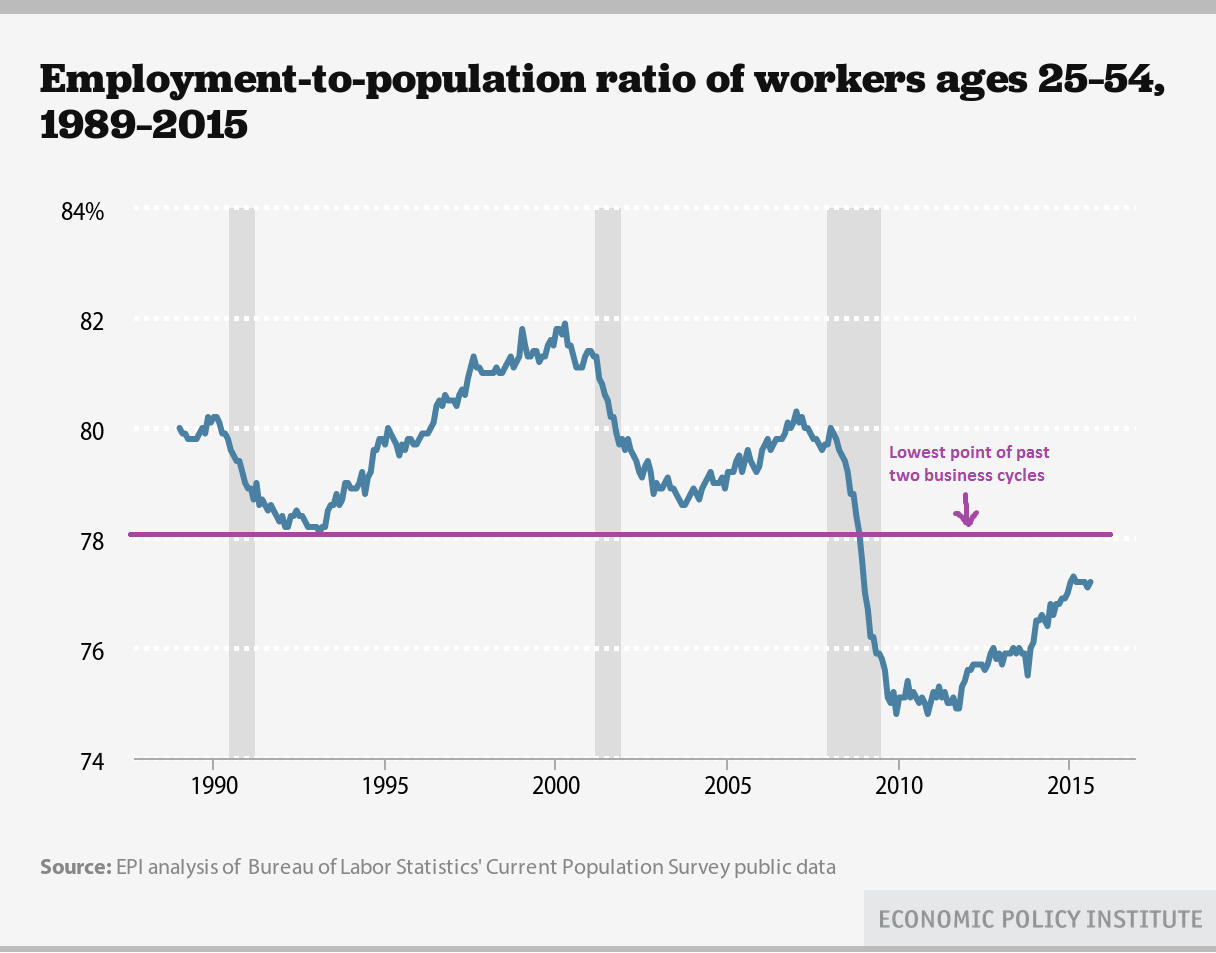What to Watch on Jobs Day: The Teacher Gap, Wages, and Prime-age EPOP
On Friday, the Bureau of Labor Statistics will release the September numbers on the state of the labor market. I will be watching for upward revisions to August’s employment numbers, which came in lower than expected. As usual, I’ll be paying close attention to the prime-age employment-to-population ratio (EPOP) and nominal wages, which are two of the best indicators of labor market health. Friday’s report will also give us a chance to examine the “teacher gap”— the gap between actual local public education employment and what is needed to keep up with growth in the student population
Prime-age EPOP—the share of the working age population who is actually working—fell dramatically during the Great Recession. It saw some solid increases once the recovery began to take hold, but unfortunately remains below the lowest point of the past two business cycles and has stagnated for much of this year, as job growth has only been fast enough to keep up with the growth of the working age population. Before we can say that the labor market is truly back to normal, we need to see faster job growth—to employ new labor market entrants, unemployed workers, and the 3+ million missing workers who have left or never entered the labor market because of weak job opportunities.
We will also continue to track nominal wage growth, looking for any sign of improvement in hourly wages. Nominal wage growth continues to be far below target, hovering around 2.0 percent for the last six years. A tighter labor market should eventually lead to stronger wage growth, but it’s clear that we are not there yet. (For that reason, the Federal Reserve has been doing the right thing and should continue to resist raising interest rates.)
Lastly, Friday’s report will give us an opportunity to re-examine the teacher jobs gap. Thousands of local public education jobs were lost during the recession, and those losses continued deep into the official economic recovery. This has been true in public sector jobs in general—continued austerity at all levels of government has been a drag on public sector employment, which has yet to return to its pre-recession level, let alone a level to keep up with population growth.
The costs of a significant teacher gap are measurable: larger class sizes, fewer teacher aides, fewer extracurricular activities, and changes to the curriculum. And, in sheer numbers, the teacher gap can explain a non-trivial part of the overall jobs gap. On Friday, I will compare where jobs in public education should be, using the pre-recession ratio, student population growth, and the most recent jobs numbers.
Enjoyed this post?
Sign up for EPI's newsletter so you never miss our research and insights on ways to make the economy work better for everyone.
